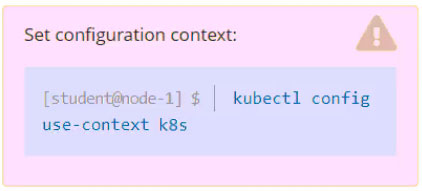

SIMULATION -
Task -
Reconfigure the existing deployment front-end and add a port specification named http exposing port 80/tcp of the existing container nginx.
Create a new service named front-end-svc exposing the container port http.
Configure the new service to also expose the individual Pods via a NodePort on the nodes on which they are scheduled.



Hamiltonian
Highly Voted 2 years, 8 months agoyorkicurke
Highly Voted 9 months, 3 weeks agobella
Most Recent 5 months, 1 week agocajif66766
6 months, 2 weeks ago137eceb
9 months agoElvi13
1 year, 1 month agoAyxanus0610
1 year, 5 months agoAWS_cert2023
1 year, 7 months agoAlencar_07
1 year, 7 months agoSamm1
1 year, 11 months agoLavaPup
4 months, 3 weeks agoreal111
1 year, 12 months agoiiiaz
1 year, 12 months agoiiiaz
2 years agomrallrounder123453656
2 years, 1 month ago